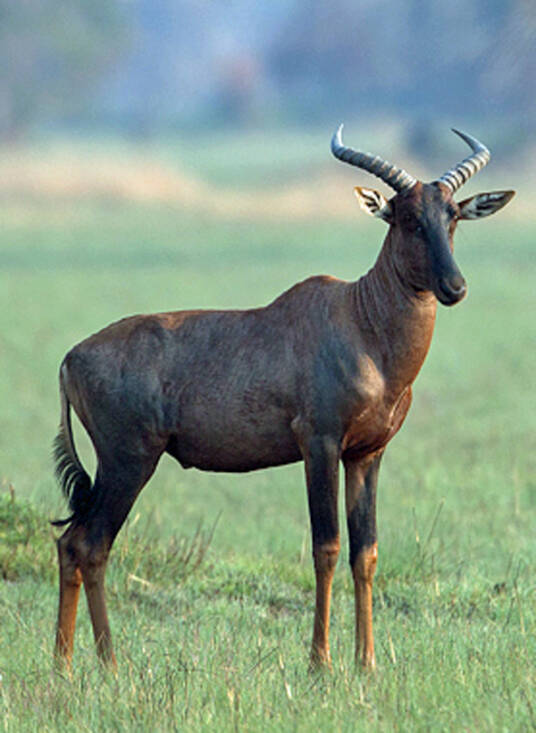Damaliscus superstes
IUCN
LCBasic Information
Scientific classification
- name:Damaliscus superstes
- Scientific Name:Damaliscus superstes,Wildebeest at Lake Bangweulu
- Outline:Ungulata
- Family:Artiodactyla Bovidae Gnu
Vital signs
- length:About 120 cm
- Weight:125-140kg
- lifetime:No verification information
Feature
The fur is dark brown in color.
Distribution and Habitat
The Bangweulu wildebeest is found in northeastern Zambia, Africa, near Lake Bangweulu, and lives only in wetlands and private hunting grounds. The species once also appeared in Katanga Province in the Democratic Republic of the Congo, but has become extinct in the region.
Appearance
The Bangweulu wildebeest is 1.2 meters tall at the shoulder and weighs 125–140 kg. It is a relatively new subspecies, darker in color, and has a different skull morphology from other subspecies, with a wider skull and longer and stronger horns. The fur is also different from other subspecies of the horned wildebeest. The horned wildebeest has reddish-brown fur, while the fur of the Bangweulu wildebeest is brown, with less obvious black spots on the thighs and shoulders. The black spots on the body are broader and less clear.
Details
Bangweulu Lake Wildebeest (scientific name: Damaliscus superstes) is also known as Bangweulu Tsessebe in English. There is no subspecies.

The Bangweulu Lake Wildebeest was once a subspecies of the Tsessebe. However, based on the differences in skull morphology and fur, it was classified as an independent species in 2003. However, it was re-identified as a subspecies of the horned wildebeest in 2013. The 2019 revised "Red List of Threatened Species of the World Conservation Union" (IUCN) adopted the 2013 identification. The Integrated Taxonomic Information System (ITIS) classifies this species as an independent species, and IUCN gives annotations and recommendations in the extended reading.
Protect wild animals and eliminate game.
Maintaining ecological balance is everyone's responsibility!








